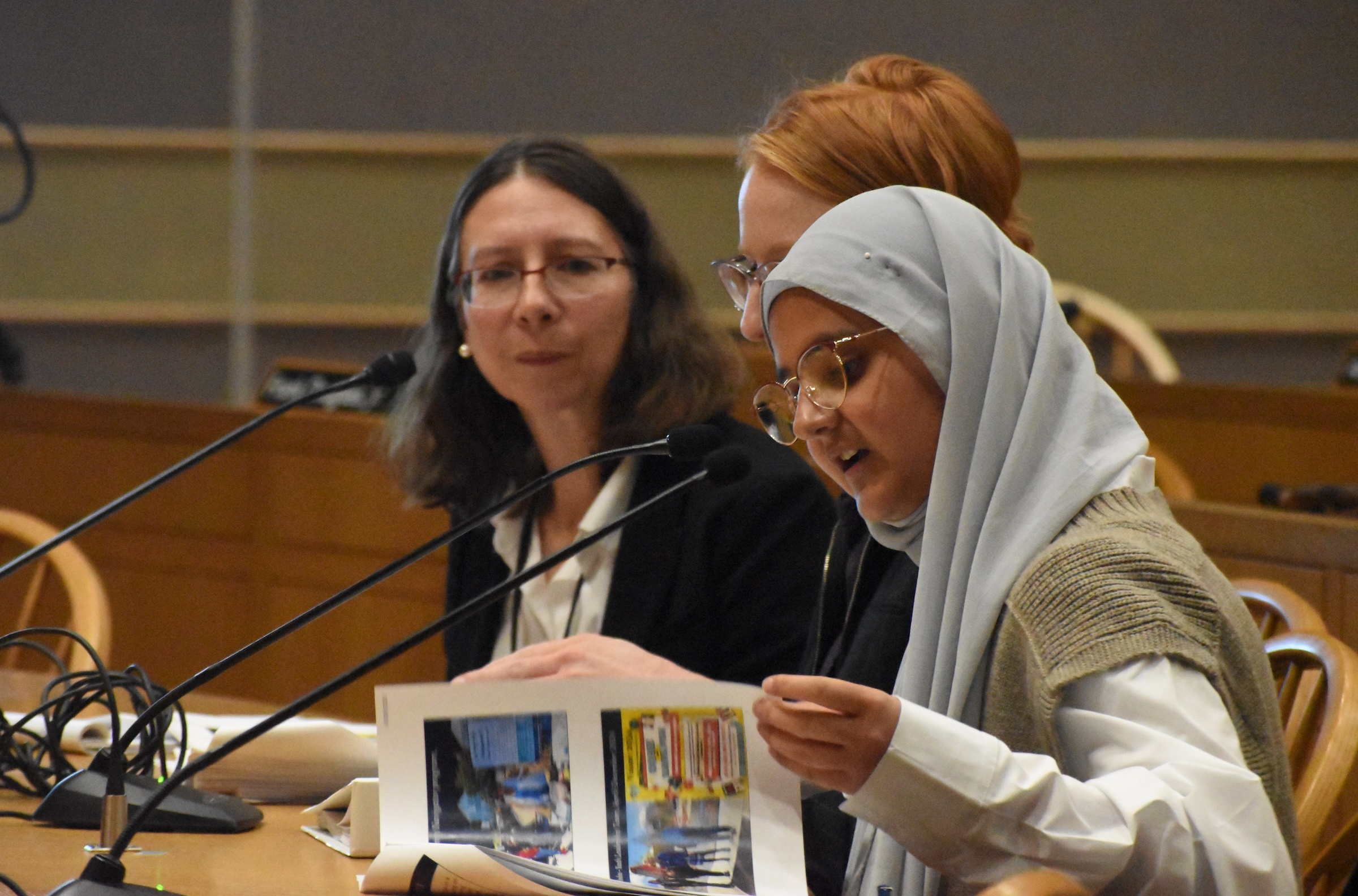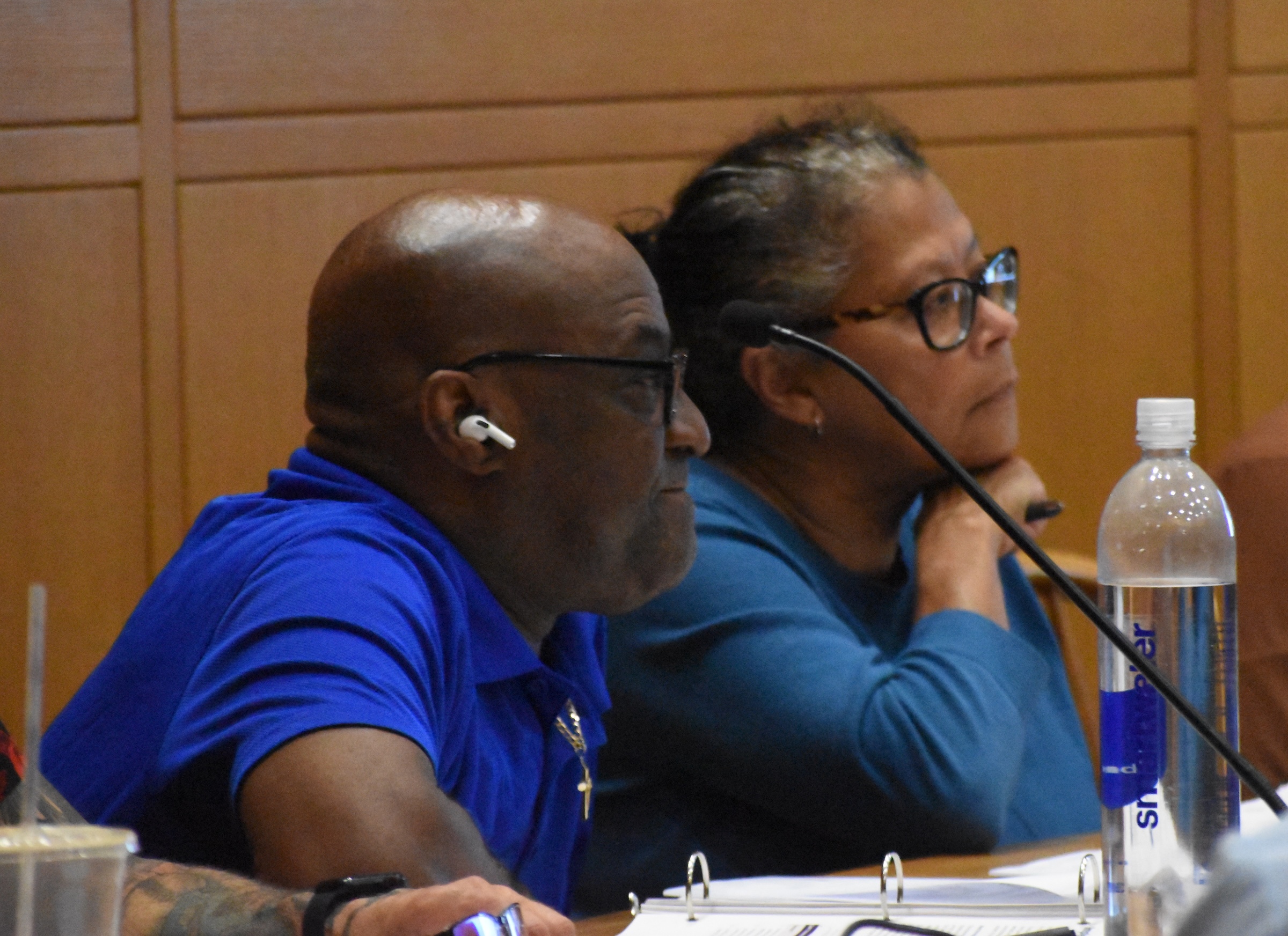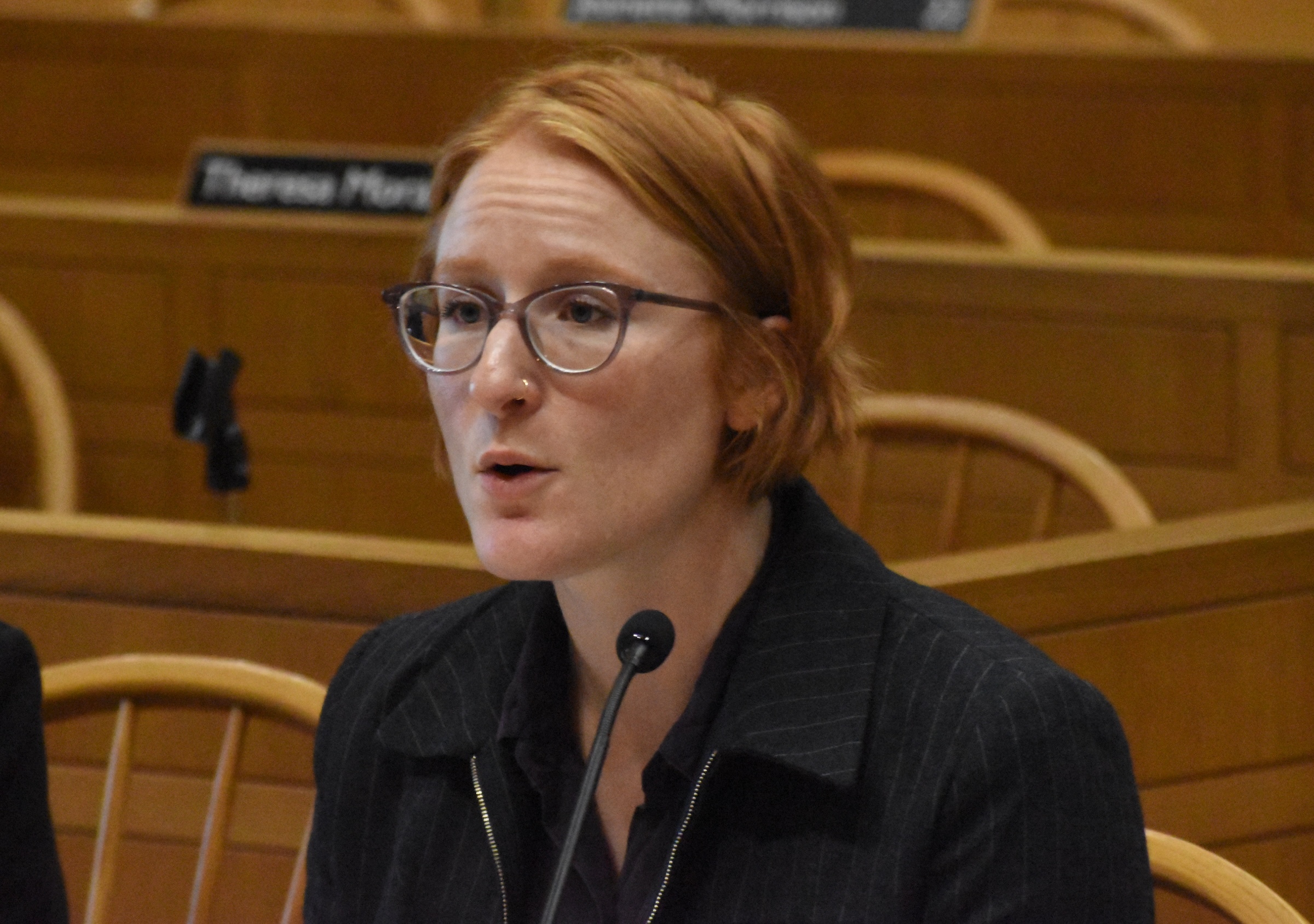
Laura Glesby photos
Sana Salimi, 14, co-presents Vision 2034 to alders.

Alder Douglass, with Chair Rodriguez: What ever happened with "Vision 2025?"
By 2034, Sana Salimi will be in her early twenties. And her city will be more walkable, housing-dense, and resilient to climate change — if all goes according to the 212-page comprehensive plan she helped produce.
Salimi, a 14-year-old rising senior at Common Ground High School, found herself before a panel of alders at City Hall on Wednesday evening to convey that future vision of New Haven.
She joined City Plan Director Laura Brown and Assistant Director of Comprehensive Planning Esther Rose-Wilen at a Board of Alders Community Development Committee meeting to present a draft of “Vision 2034,” the comprehensive plan that the city must produce once a decade under state law.
The committee members unanimously voted to recommend that their colleagues on the full Board of Alders support the plan.
The comprehensive plan, according to the Vision 2034 website, is “a blueprint of the city’s vision for the future, and a policy guide for achieving planning goals” intended to serve as a “decision-making guide.”
After publishing a draft in June and leading public hearings through the City Plan Commission, the City Plan department is seeking input from the Board of Alders and the Southern Connecticut Regional Council Of Governments, among other groups. Feedback from those entities as well as members of the public may lead to revisions. Eventually, around October or November, the document will return to the City Plan Commission for a final approval.
The plan is meant to outline broad goals and values rather than step-by-step plans. The numerous aims mentioned in the draft of Vision 2034 (among too many to list) include:
• Increasing the supply of housing and especially deeply affordable housing.
• Finding new purposes for vacant and dilapidated buildings across the city.
• Making city infrastructure more walkable, more accessible to disabled residents, and more resilient to climate change.
• Removing parking minimums for new developments.
• Supporting local economic growth in sectors like biotech, healthcare, and culinary arts.
Salimi was one of eight New Haven high school students hired as paid outreach coordinators on the comprehensive plan’s Youth Leadership Team for 18 months.
She said she isn’t typically the biggest fan of public speaking, but while presenting to alders on Wednesday, she felt proud of the planning process she helped steward.
“Today is the day we brought all our hard work together,” Salimi said after the meeting.
“Usually, youth are not heard that much,” she said.
She and her fellow Youth Leadership Team members were tasked with encouraging their peers to contribute their input to the plan — part of an extensive community engagement process baked into the plan’s creation.
The Youth Leadership Team program was cut short when President Donald Trump’s administration suddenly paused one of its funding sources in February 2025, an Environmental Protection Agency Environmental Justice Collaborative Problem Solving grant.
But within the year and a half that the program operated, Salimi and her peers tabled at festivals, heard input at public meetings, and brainstormed alongside city leaders.
She and her peers organized two game nights and operated “slime tables” at community fairs, using the activities as an opportunity to connect with other teens and kids — and to start conversations about what they hope to see in their city.
They gathered input from a total of 500 kids and teens across the city. According to the draft plan, “the top priority for young people in the City was access to efficient, safe, clean, and affordable transportation.”
Salimi, who also served on the Comprehensive Plan’s steering committee, said she’s most excited about the plan’s economic development goals, including an aim of spurring more job opportunities in the city.
“I’m getting paid through this,” she said of the Youth Leadership Team role. That income helped her understand the impact of the various economic development goals on a more concrete, personal level.
The Youth Leadership team was part of a broader effort to include community members in the planning process.
City Plan staff, led by Rose-Wilen, hosted meetings that drew hundreds of participants alongside consulting firms including FHI Studio.
On top of those larger meetings, the city hired 10 adult “Community Navigators” to host gatherings and independently reach out to residents across the city.
Some of those gatherings involved outside-the-box, often tactile methods of helping residents visualize how their city could change — from walking tours to art-making to building blocks to post-it notes on maps.
Additionally, the planners enlisted the help of six open-membership “co-creation teams” focused on specific subjects, ranging from the environment to the arts. And they garnered input from 1,600 respondents to an online survey.
Fereshteh Ganjavi, one of the community navigators, described the plan as “full of love, not just data.”
Brown noted that the city is still gathering feedback from community members about the draft. “We want you to feel confident that this truly reflects the needs and desires of residents,” she said.
Rose-Wilen argued that the community input process was meaningful in and of itself. “It wasn’t just a means to an end,” she said. “It brought community members together in a way that has lasting impact.”
“It sounds like you went out to many different areas in the city,” said Community Development Chair and Hill Alder Carmen Rodriguez.
Dwight Alder Frank Douglass asked about the city’s progress on its goals from the most recent comprehensive plan, “Vision 2025.”
Rose-Wilen said that “a majority” of the goals have been “initiated or completed,” though “in some cases, priorities shifted or funding was expected and didn’t come.”
Vision 2025 lacked the kind of specific, time-bound, and measurable goals that would be needed to truly assess its effectiveness, added Brown.
She said that once this new plan is approved, the city will work across departments to make each goal more concrete — identifying, for example, a specific amount of affordable housing units to bring in.

Assistant Director of Comprehensive Planning Esther Rose-Wilen.